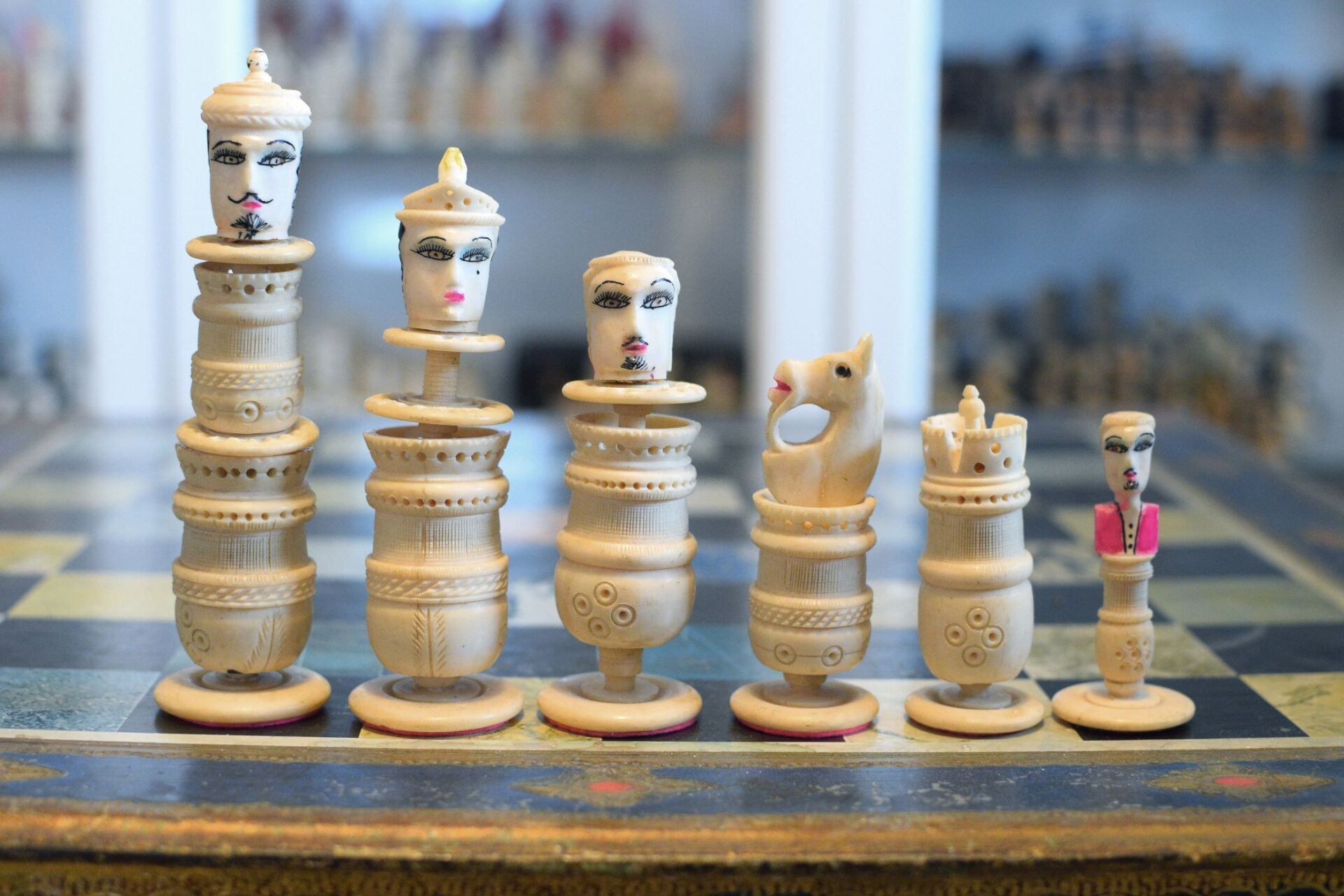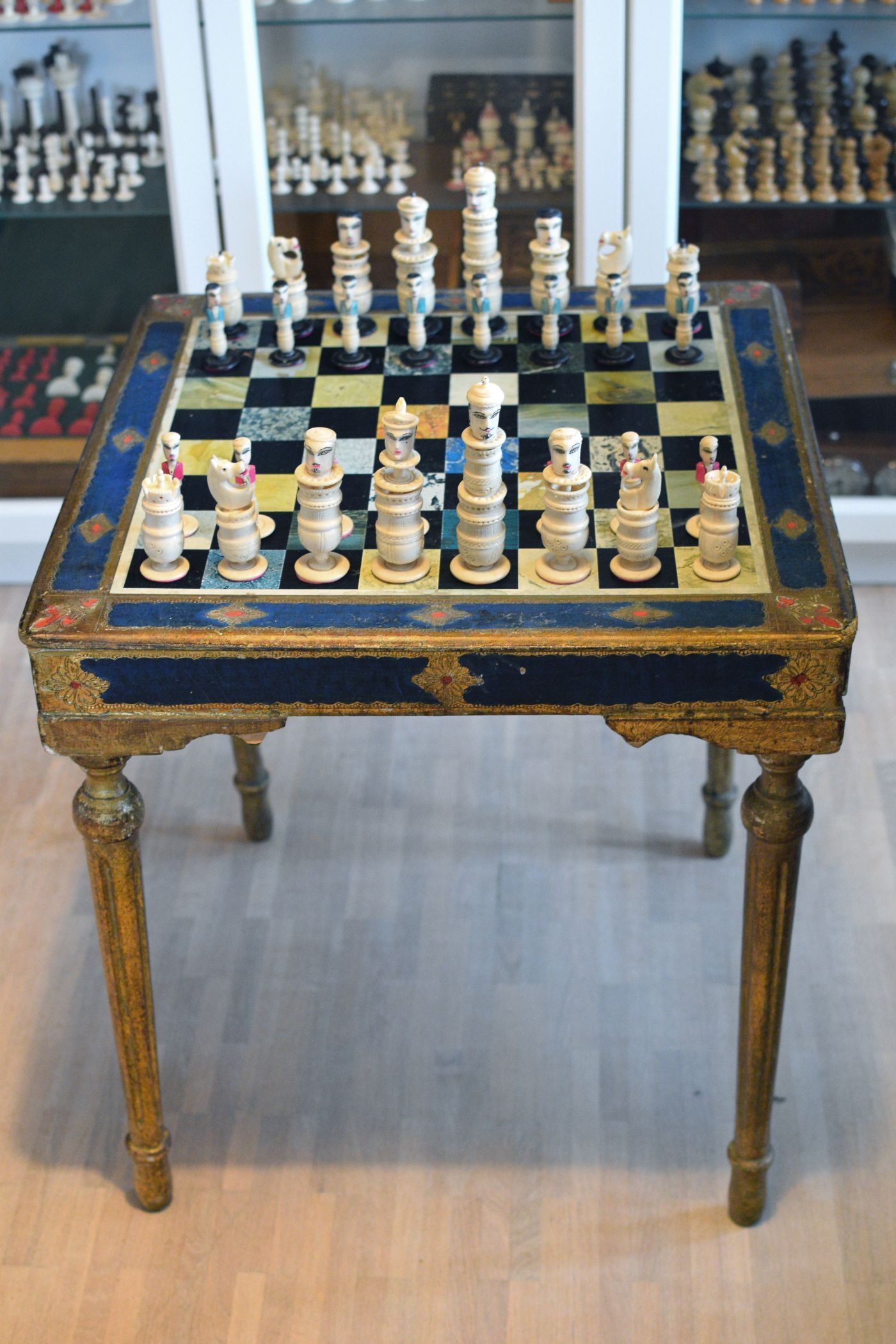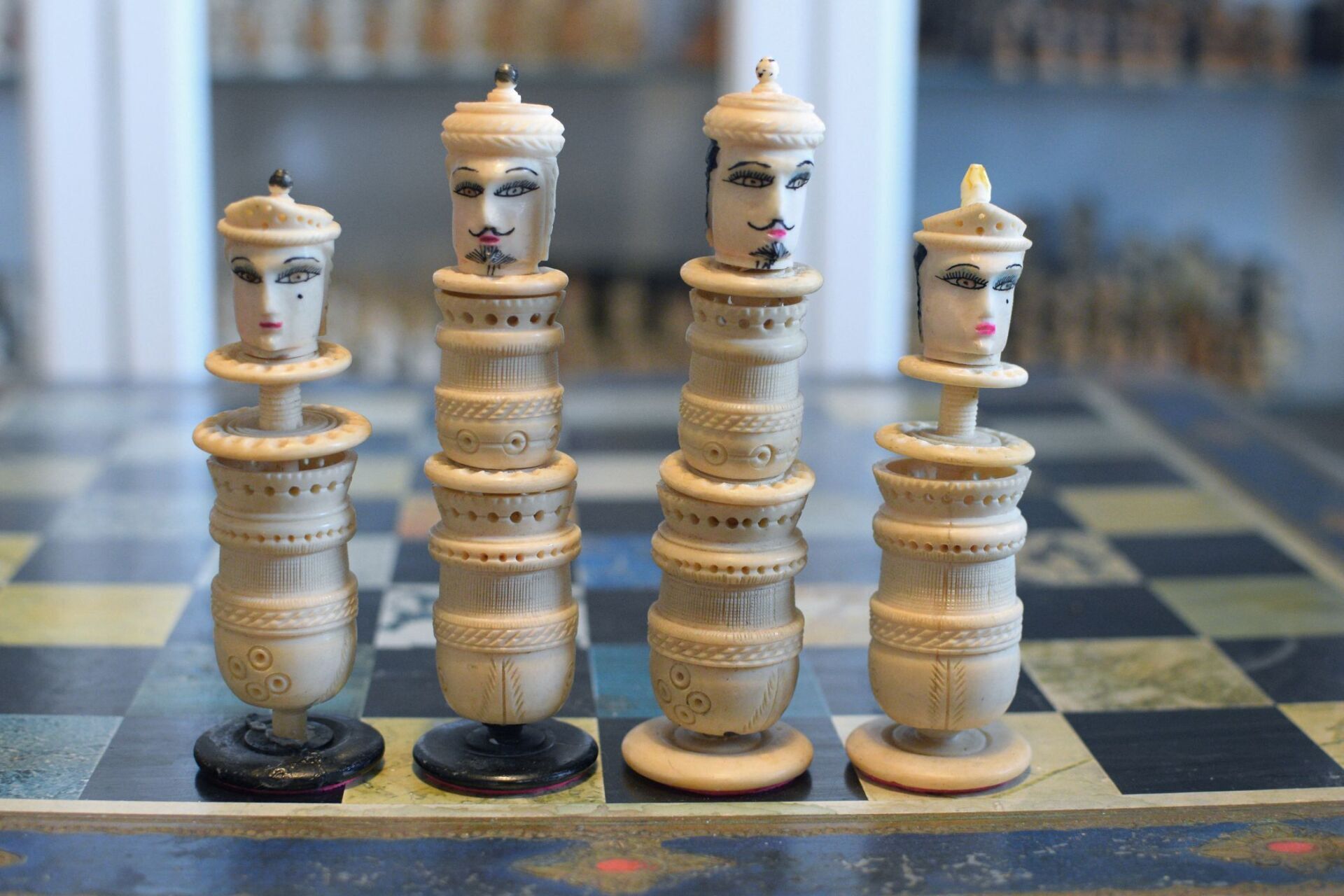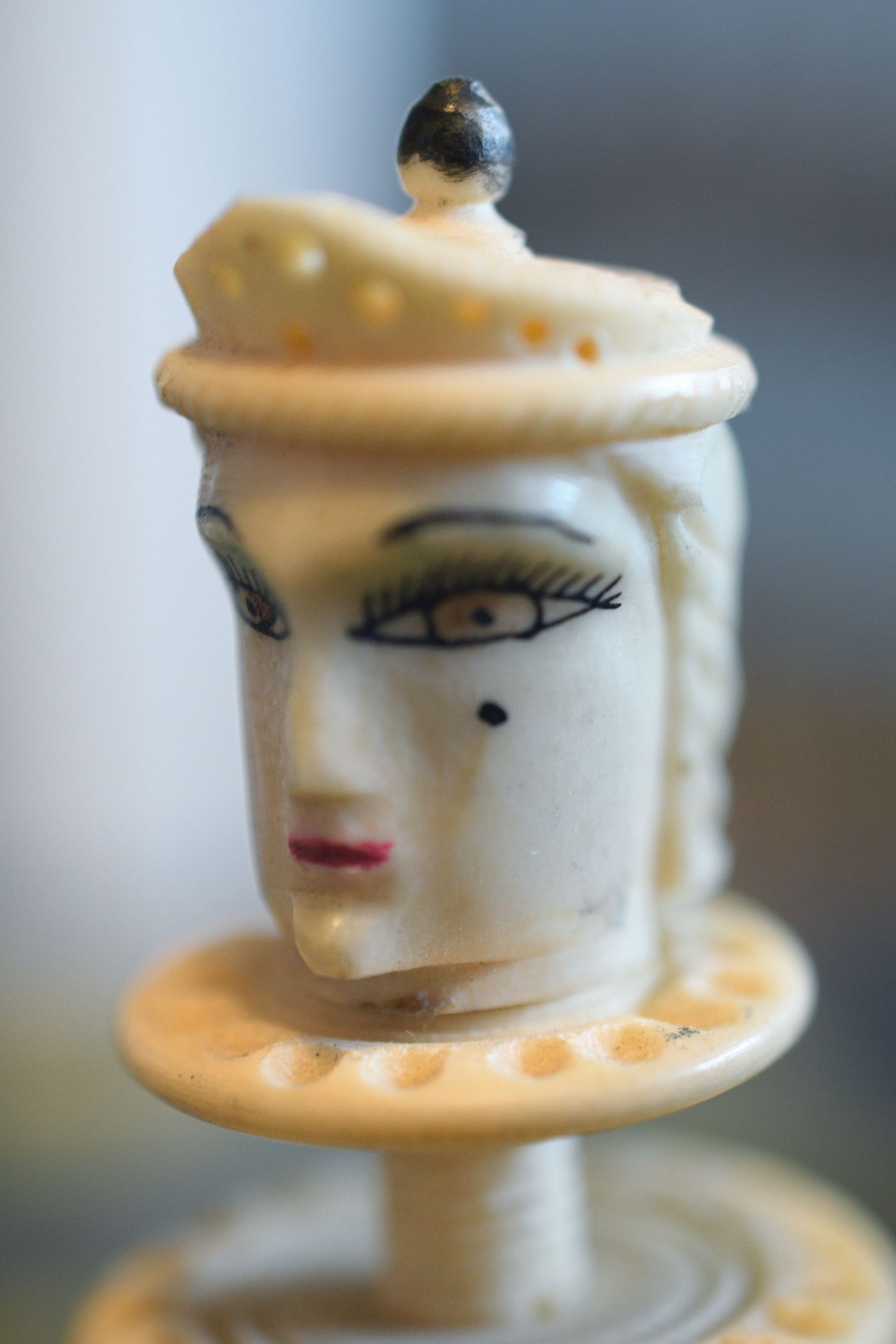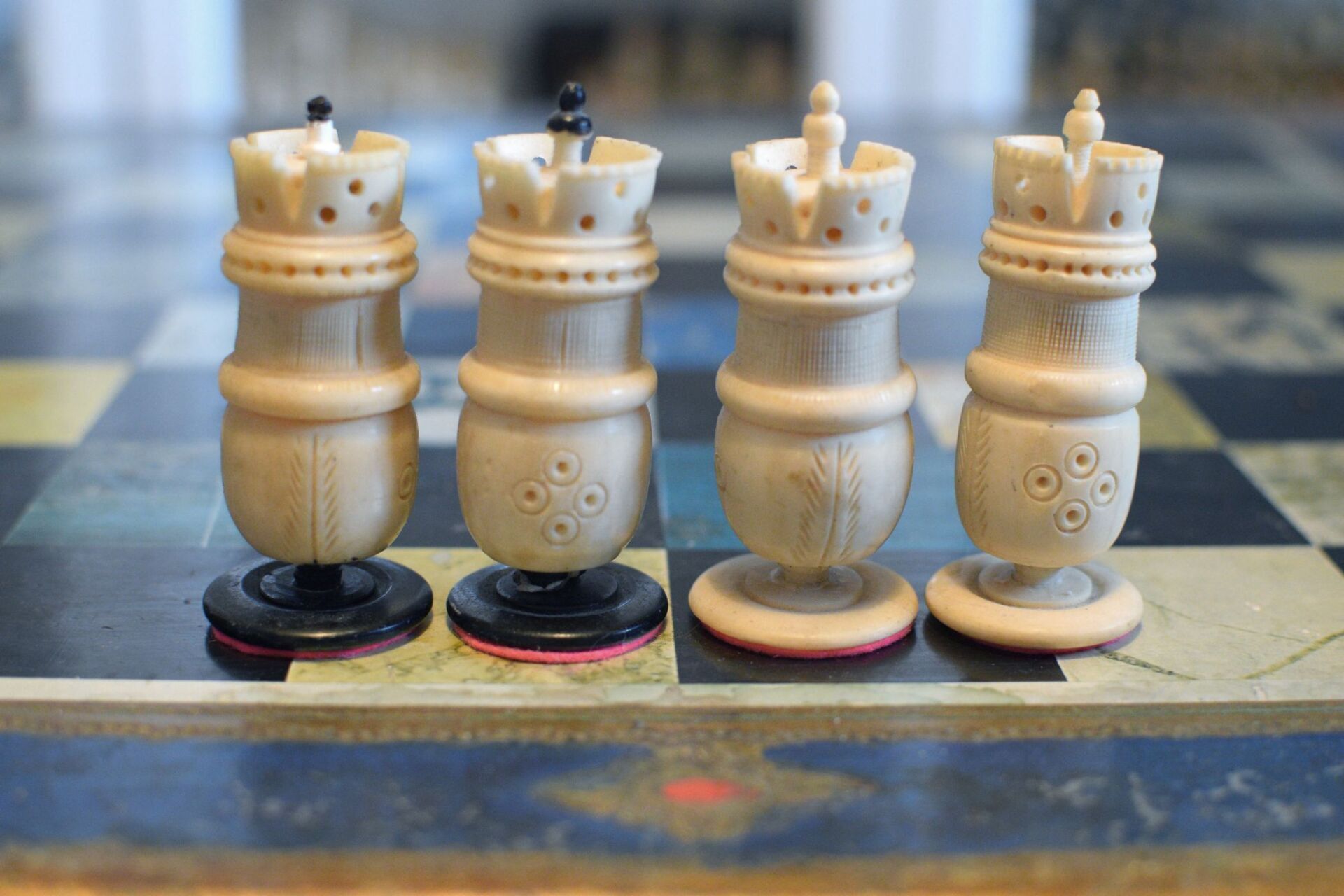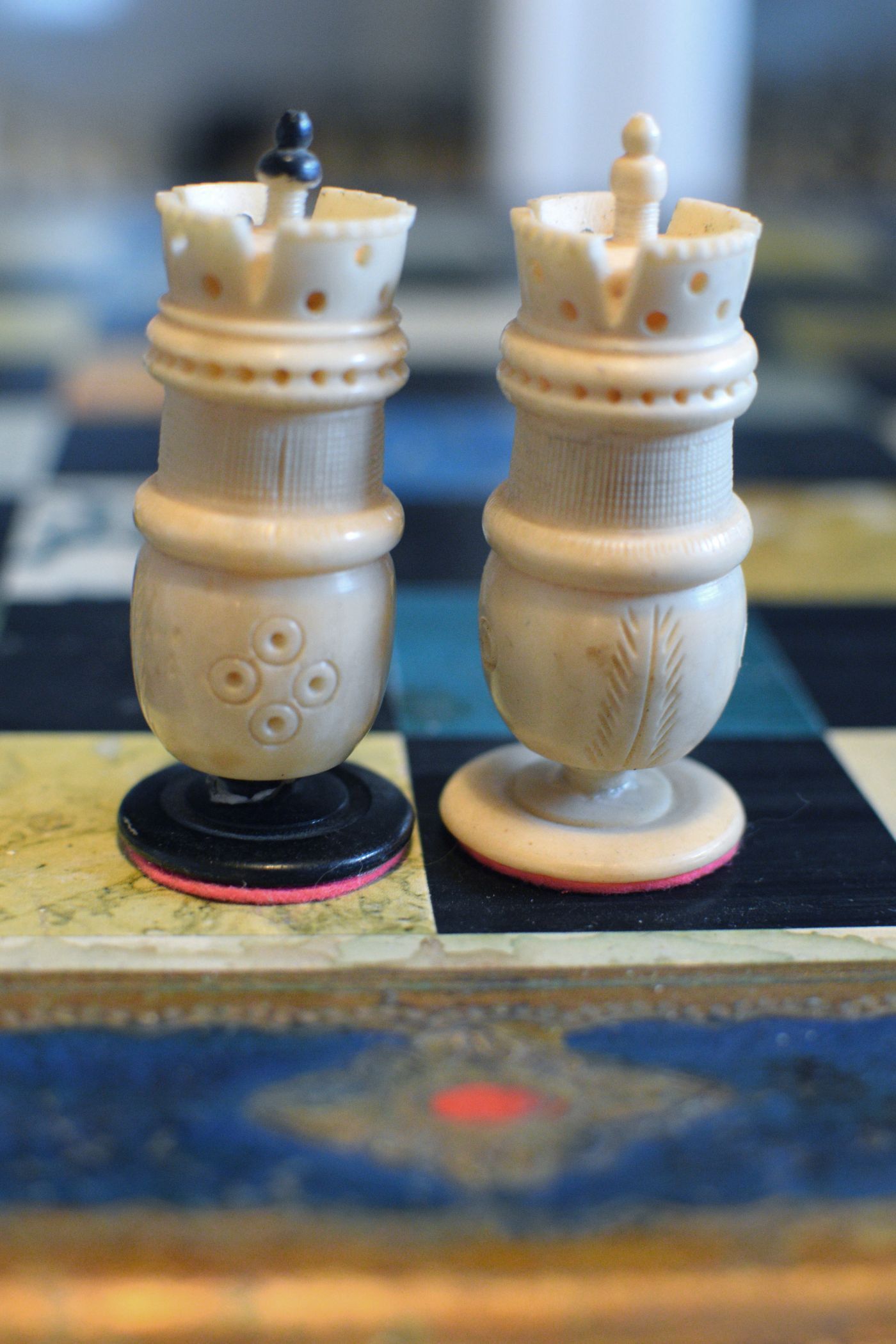Mexican Figural "Pulpit" Chess Set, early 20th century
A rather unusual Mexican chess set made of bone. The set is figural in style and sometimes referred to as "Pulpit" style, due to the elongated shaped bodies consisting of pierced and serrated barrels on which the signifiers are based. They remind of the so called "Spanish Pulpit" chess pieces, hence the name, even though there is no evidence of any direct connection between the two.
The kings, queens, bishops and pawns are shown with painted faces and very emphasized large eyes with painted brows and lashes and a blue eyeshadow. The kings with pointed beards and a round crown. The queens with a small black "mouche" on the left cheek. Mouches are small, black beauty patches, which were - mainly by fashion avid females - applied to the powdered face to emphasize the pale skin. They were extremely popular in 17th and 18th century French fashion.
The white side and the left side are mainly distinguished by white and black hair and white and black round bases. Another very distinguishing feature, which makes the set rather special, are the colours of the pawns' coats, which are bright pink for the white pawns and light blue for the black pawns. Sets of similar style are often found with pawns in the form of a hand holding a dagger. More abstract forms of this set (i.e. without painted faces) were produced well into the 20th century, but Keats also shows a sets with painted faces and "dagger" pawns in his book "Chessmen for Collectors" on page 224, picture 270, which he dates to the 19th century. However, I personally think it is probably safer to date this to early 20th century. The version shown here with figural pawns in bright colours is rare nonetheless. I have only found one reference to a comparable set, which was sold in an auction by Freeman's in 2002.
The chess set is shown on a small chess table, painted predominantly in blue and gold colour, which in my view adds to the already colourful chess pieces and gives them a slightly "Fin de siècle" style.
